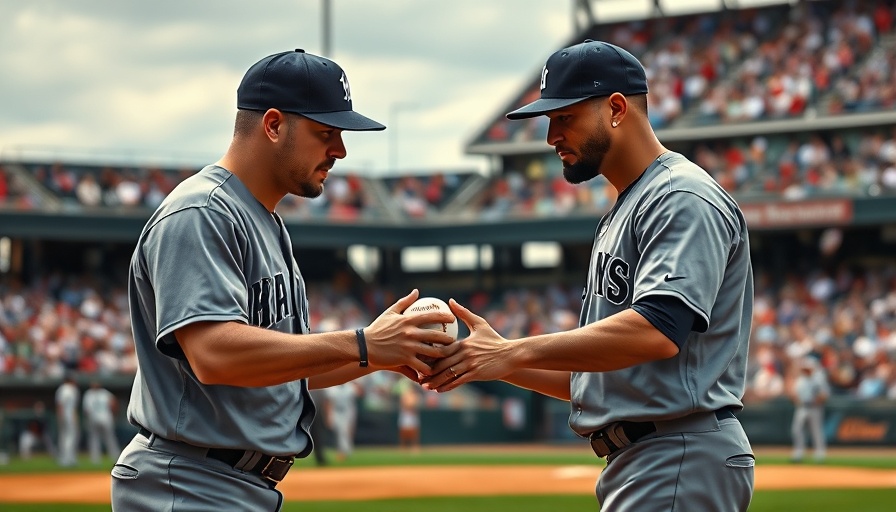
The Pitch Revolution: Understanding the Kick-Change
As baseball continues to evolve, veterans and newcomers alike search for that elusive edge—something that can take their game to the next level. Enter the kick-change pitch: not quite a changeup and not entirely a fastball, this innovation is creating significant buzz in the league. Just as the 'sweeper' gained traction a couple of seasons ago, the kick-change is quickly establishing itself as a vital element of pitchers' arsenals.
Clay Holmes Joins the Ranks
Recently, Clay Holmes, the former Yankees reliever turned Mets starter, has embraced this new trend. Known for his analytical approach to pitching, Holmes is committed to mastering the grip and technique of the kick-change, which involves raising the middle finger while keeping the other fingers flat. This subtle adjustment results in a unique spin and movement, prompting hitters to second-guess their swings.
Holmes isn’t alone in this endeavor. Several pitchers from across the league have also begun experimenting with this technique, including Mariners closer Andrés Muñoz and Giants pitcher Hayden Birdsong, both of whom have successfully integrated the kick-change into their game plans. Its growing popularity speaks volumes about its potential impact on competitive performance.
Why the Kick-Change Matters
Understanding why this pitch matters is crucial, especially for fans and players alike. The kick-change adds an element of unpredictability to a pitcher’s repertoire. As batters become increasingly adept at recognizing pitches, the ability to disrupt their timing with variable movements becomes essential. This escalating complexity can be the difference between a hit and a strikeout, making the kick-change a valuable asset in high-pressure games.
Historical Context: Evolution of Pitches
Baseball has a rich history of pitch innovation. From the fastball to the splitter, each generation has introduced unique styles that fit the evolving landscape of gameplay. The kick-change is part of this ongoing narrative, representing the creativity and adaptability that define pitchers' strategies over time. Players embracing modern techniques offer a forward-looking perspective, emphasizing that even traditional sports must adapt to remain engaging and competitive.
The Future of the Kick-Change
As Holmes and others hone the technique, the upcoming season could see a wave of kick-changes being executed across different stadiums. Knowledge of this pitch will likely serve as a conversation starter among fans and commentators. Expect to see its effectiveness scrutinized through advanced analytics, providing a rich ground for debates on the evolving dynamics between pitchers and batters.
Learning from the Masters
For aspiring pitchers, understanding the intricacies of the kick-change can bridge the gap between traditional training and innovative techniques. Like any skill, it requires practice, patience, and a willingness to experiment. Coaches need to incorporate this into their training sessions, providing young players with the tools necessary to thrive in a fast-evolving game.
Encouraging Pitchers to Share Knowledge
As the kick-change rapidly evolves, there is a unique opportunity for experienced players to mentor younger ones. Sharing insights on grip, execution, and mental approach can foster a collaborative culture within teams. This environment encourages continuity in learning while enhancing team performance, setting the stage for rich narratives on how traditional skills can be adapted for modern challenges.
In conclusion, the addition of the kick-change to the game of baseball not only reinvigorates the sport but also serves as a reminder of baseball’s inherent love for innovation. For fans and players, its unfolding story promises to deliver exciting matchups and conversation for seasons to come. As Clay Holmes seeks to master this new pitch, many will be watching closely to see how it affects his performance on the mound—and the game as a whole.
 Add Element
Add Element  Add Row
Add Row 



 Add Row
Add Row  Add
Add 


Write A Comment